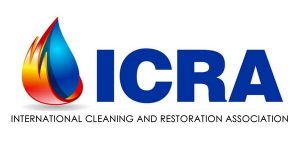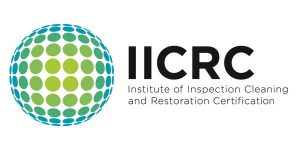
Knee-deep flooding is clearly a major problem. But just a fraction of an inch of water can destroy carpet, and the larger the area affected the more likely that’s going to happen. So any large leak, overflow, or spill spells carpet trouble.
It’s important to understand what can happen and what to do about it. Depending on the situation there can be issues with mud or other contamination, but in nearly every case the number one concern is mold. A serious outbreak can get going in as little as 24 to 48 hours, so you have to act fast. And the primary task is drying out the carpet and flooring beneath.
A Little Background
What needs to be done is determined by three factors — the cleanliness of the water, how long things have been wet, and the size of the area that was soaked.
- With water directly from clean sources (such as a burst water pipe) or relatively clean sources (such as a washing machine overflow or dishwasher), there shouldn’t be an immediate health hazard. But if the water has been in contact with soil, or worse yet sewage, it’s an immediate and serious health risk. It’s advisable to hire a water damage restoration specialist and materials such as carpet will most likely need to be thrown away.
- After lingering for a couple of days water and wetness from any source are likely to be loaded with disease organisms and really need to be treated as hazardous waste. So the carpet is usually not salvageable. Not sure when the flooding or leak occurred? If there are any odors it’s probably too late for a rescue.
- Small spills usually aren’t a problem. But if more than a small part of a room is affected it can take weeks to fully dry out. That’s plenty of time for mold and bacteria to get out of control, so aggressive drying is needed to reduce that time to just a few days.
5 Steps for Small Problems
If only part of a room was flooded with clean water for at most a day, there are 5 not-too-difficult steps for carpet recovery.
- Step 1 is really a no-brainer. Identify the source of water and put a stop to it.
- Use towels to blot up as much moisture as possible. Using a shop wet-vac is even better.
- Set up fans to circulate air within the room as well as in and out of the room. Open windows if it’s not humid outside. This airing-out may be necessary for several days, with fans running 24 hours a day.
- Steam clean the carpet to remove contamination, including mold spores, as well as help, kill bacteria. Using a color-safe anti-microbial cleaner is a good precaution.
- Sanitize other room surfaces to help prevent mold and mildew.
TIP #1: Avoid walking on wet carpet as much as possible to avoid crushing its fibers.
5 More Steps for Big Problems
Large areas of soaked carpet require aggressive drying, and Step 3 above becomes it’s own 5 steps. Since things will remain damp for several days and may become hazardous you’ll need to protect yourself by wearing a mask, gloves, and boots whenever you’re in effected areas. Even if the source was clean. Before starting, if furniture or other items in the room are damp, remove them. They’ll dry out more quickly themselves and won’t add to indoor humidity that would slow down the drying of the floor.
- Remove as much moisture as you can using a rental shop wet-vac or carpet cleaner. Use long slow strokes and many passes, not like regular vacuuming.
- Lift the carpet so that it can dry from both sides. This also helps the sub-floor, whether concrete or plywood, dry more quickly as well.
- Throw away the padding. It’s literally a sponge and is inexpensive to replace.
- Set up lots of air circulation using ceiling fans, room fans, window fans and/or blowers — anything you have, can borrow, or can rent. If it’s not humid outside, set up fans in the windows to exhaust humid air from the room, pulling fresh air from open windows elsewhere in your home or business. Otherwise, rent a commercial dehumidifier. It’s critical to get everything thoroughly dry in just a couple of days.
- Once the sub-floor and carpet are completely dry you can replace the padding and re-install the carpet.
TIP #2: If there’s a smell, there’s a problem. If you notice the musty odor of mold and mildew or a foul smell (bacteria) then things didn’t get dried out quickly enough. There’s little chance you can rescue that carpet, and you’ll have to disinfect the area.
TIP #3: If you don’t want to risk an even bigger problem, call in a water damage restoration expert right from the start.









